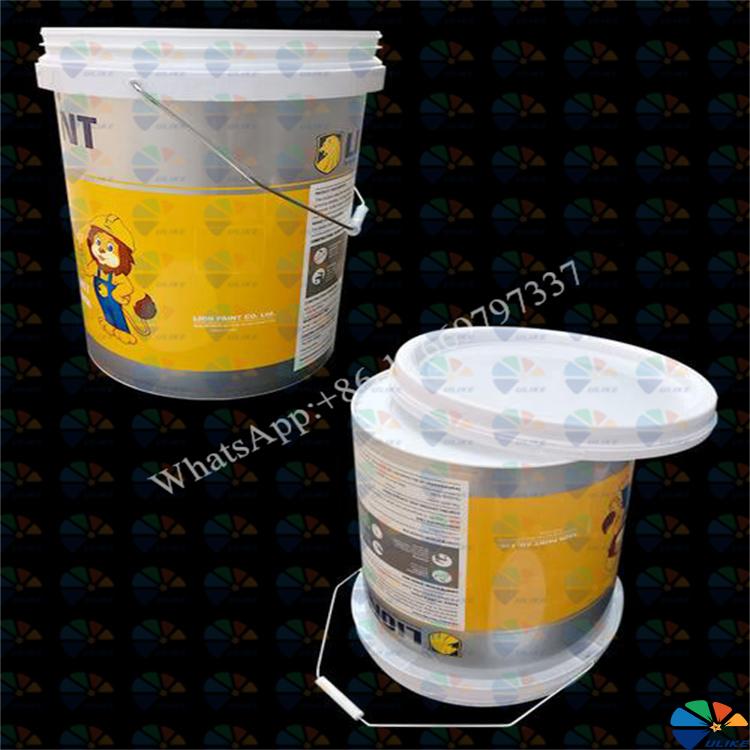The hazards and elimination methods of static electricity in thermal transfer films
The hazards and elimination methods of static electricity in
thermal transfer films
1 What is static electricity in thermal transfer films
The static electricity in thermal transfer films is generated by the friction between the films during the printing process of thermal transfer films due to the rotation adjusted on the printing machine. After the production is completed, these charges will remain in the packaged thermal transfer films. So what harm will these static electricity cause to the normally printed film products? Is there any way to eliminate them?
2 Hazards of static electricity in thermal transfer films
a. Affecting the printing quality of products
First, the surface of the substrate is charged, such as polyethylene, polypropylene, PET, etc. They will absorb a large amount of dust and impurities in the air, thereby affecting the transfer of ink, reducing the ink transfer rate, and appearing "flower spots", needle swelling or small white spots on the printed products, or causing slippage and uneven winding due to mutual repulsion. The discharge phenomenon of static electricity in thermal transfer films will also damage the surface coating of the material and affect the quality of the product. Secondly, the ink is charged, which will cause "static ink spots" to appear on the printed products.
b. Impact on production safety
In severe cases, charged substrates may even cause air discharge due to ultra-high potential, causing electric shock or fire.
3 Methods for eliminating static electricity in thermal transfer films
A. Physical elimination method
The physical elimination method is a method that uses the inherent characteristics of static electricity to eliminate static electricity without changing the function of the material. For example, the "grounding" elimination method is to install an antistatic brush in the process.
B. Chemical elimination method
The chemical elimination of static electricity in thermal transfer films is the antistatic agent treatment technology, which is mainly a method of modifying the electrical properties of resins or substrates by adding (filling) technology or coating technology with antistatic agents (surfactants). It is a more thorough and complete antistatic technology.
C. Additive treatment technology
This technology (i.e. masterbatch technology) is to mix the additive antistatic agent with a thermoplastic resin at a certain concentration (several percent to tens of percent), add a variety of additives, and obtain antistatic masterbatch through melting, mixing, and granulation.
D. Coating treatment technology
Coating antistatic agent treatment technology is to make ionic surfactants into antistatic coatings and apply them on the surface of plastic films to prevent charge accumulation. The selection of coating antistatic agents should be determined according to the work function of the coated substrate.
![af]() Afrikaans
Afrikaans![sq]() Albanian
Albanian![am]() Amharic
Amharic![ar]() Arabic
Arabic![fr]() French
French![es]() Spanish
Spanish![ru]() Russian
Russian![de]() German
German![hy]() Armenian
Armenian![it]() Italian
Italian![ja]() Japanese
Japanese![ko]() Korean
Korean![pt]() Portuguese
Portuguese![hi]() Hindi
Hindi![az]() Azerbaijani
Azerbaijani![ro]() Romanian
Romanian![pl]() Polish
Polish![th]() Thai
Thai![el]() Greek
Greek![eu]() Basque
Basque![en]() English
English![zh-CN]() Chinese (Simplified)
Chinese (Simplified)![zh-TW]() Chinese (Traditional)
Chinese (Traditional)![be]() Belarusian
Belarusian![bn]() Bengali
Bengali![bs]() Bosnian
Bosnian![bg]() Bulgarian
Bulgarian![ca]() Catalan
Catalan![ceb]() Cebuano
Cebuano![ny]() Chichewa
Chichewa![co]() Corsican
Corsican![hr]() Croatian
Croatian![cs]() Czech
Czech![da]() Danish
Danish![nl]() Dutch
Dutch![eo]() Esperanto
Esperanto![et]() Estonian
Estonian![tl]() Filipino
Filipino![fi]() Finnish
Finnish![fy]() Frisian
Frisian![gl]() Galician
Galician![ka]() Georgian
Georgian![gu]() Gujarati
Gujarati![ht]() Haitian Creole
Haitian Creole![ha]() Hausa
Hausa![haw]() Hawaiian
Hawaiian![iw]() Hebrew
Hebrew![hmn]() Hmong
Hmong![hu]() Hungarian
Hungarian![is]() Icelandic
Icelandic![ig]() Igbo
Igbo![id]() Indonesian
Indonesian![ga]() Irish
Irish![jw]() Javanese
Javanese![kn]() Kannada
Kannada![kk]() Kazakh
Kazakh![km]() Khmer
Khmer![ku]() Kurdish (Kurmanji)
Kurdish (Kurmanji)![ky]() Kyrgyz
Kyrgyz![lo]() Lao
Lao![la]() Latin
Latin![lv]() Latvian
Latvian![lt]() Lithuanian
Lithuanian![lb]() Luxembourgish
Luxembourgish![mk]() Macedonian
Macedonian![mg]() Malagasy
Malagasy![ms]() Malay
Malay![ml]() Malayalam
Malayalam![mt]() Maltese
Maltese![mi]() Maori
Maori![mr]() Marathi
Marathi![mn]() Mongolian
Mongolian![my]() Myanmar (Burmese)
Myanmar (Burmese)![ne]() Nepali
Nepali![no]() Norwegian
Norwegian![ps]() Pashto
Pashto![fa]() Persian
Persian![pa]() Punjabi
Punjabi![sm]() Samoan
Samoan![gd]() Scottish Gaelic
Scottish Gaelic![sr]() Serbian
Serbian![st]() Sesotho
Sesotho![sn]() Shona
Shona![sd]() Sindhi
Sindhi![si]() Sinhala
Sinhala![sk]() Slovak
Slovak![sl]() Slovenian
Slovenian![so]() Somali
Somali![su]() Sudanese
Sudanese![sw]() Swahili
Swahili![sv]() Swedish
Swedish![tg]() Tajik
Tajik![ta]() Tamil
Tamil![te]() Telugu
Telugu![tr]() Turkish
Turkish![uk]() Ukrainian
Ukrainian![ur]() Urdu
Urdu![uz]() Uzbek
Uzbek![vi]() Vietnamese
Vietnamese![cy]() Welsh
Welsh![xh]() Xhosa
Xhosa![yi]() Yiddish
Yiddish![yo]() Yoruba
Yoruba![zu]() Zulu
Zulu


